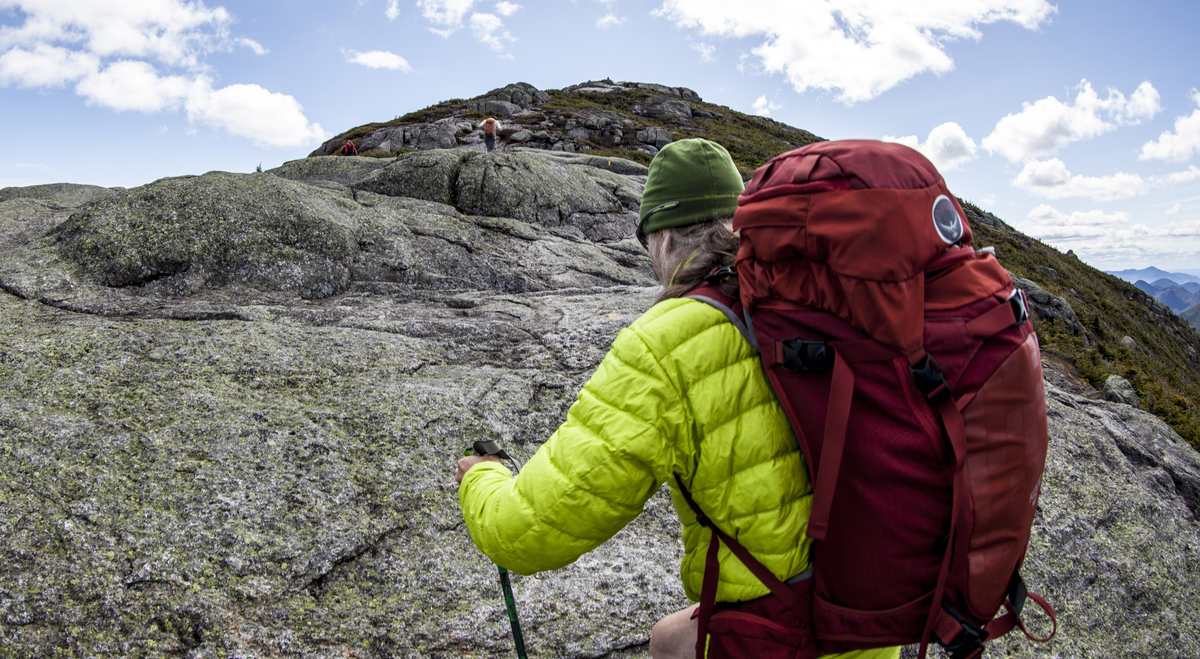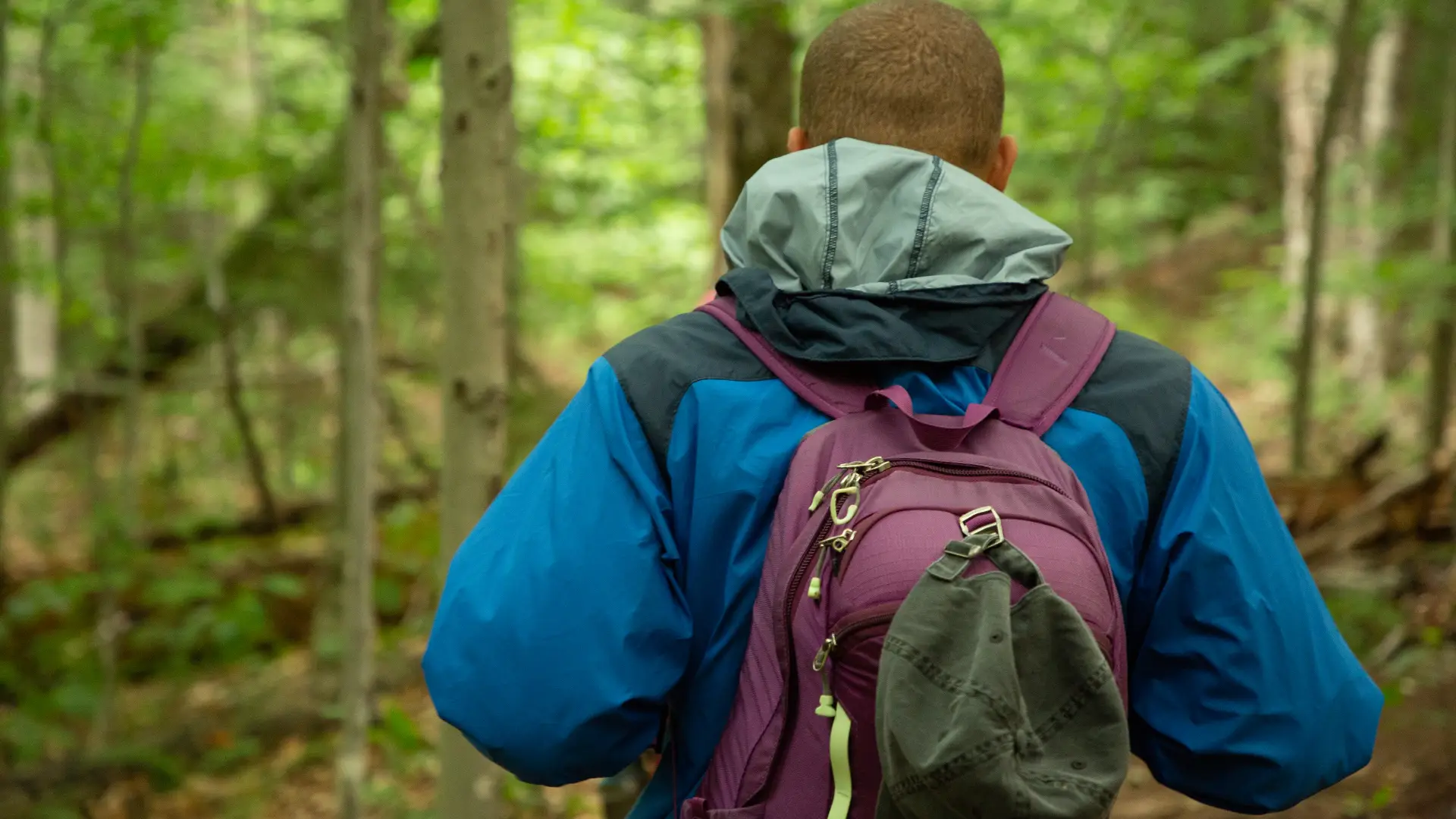Don’t let our well-marked trails fool you. A hike in the High Peaks is really a trek into a beautiful, mountainous backcountry where weather conditions can change rapidly. Risk of injury or getting lost can be reduced with some careful planning and foresight. What’s in your pack can make your hike more enjoyable, and it can also save your life.
There is no single list of essential hiking gear, but there are some basic guidelines that are good to be aware of. Check out our recommendations below, and consult other sources for more ideas, especially if you’re new to hiking. Always sign the trail register, and always let someone know where you're going and what time you plan on returning. Have fun, and be safe!
The basics
No matter which season you’re hiking in, there are some items you should have on hand.
Besides a good pair of hiking boots or trail shoes, you should always hike in non-cotton clothing. There is scientific evidence to back this up, but you’re eager to get on the trail, right? The short version is this: Cotton absorbs moisture, and other materials don’t. Believe it or not, it is possible to become hypothermic in any season. Cotton holds onto water, so it keeps you feeling sweaty in hot temperatures and chills you if things turn cold and wet.

If you wear a shirt made of wool or a synthetic material, it won’t be soaked in sweat when you reach the summit. That means you won’t feel as cold when you stop moving. The no-cotton rule also applies to socks. Light wool socks allow your feet to breathe, while heavy wool socks will trap heat on cold days. And since wool doesn’t absorb sweat, you’ll be far less likely to get the blisters caused by a wet cotton sock rubbing against your heel!
Here’s a list of important items for your pack year-round:
- Headlamp with extra batteries
- Rain gear or poncho
- Food
- Water
- Water purification tablets
- First-aid kit
- Map
- Compass
- Fire-starting kit
- Space blanket
- Knife
- Whistle for signaling rescuers
Getting ready for the seasons

Hikers might want to add items to this list, especially once they have some experience on the trail. A comfortable hiker is a happy hiker, after all! The following are some suggestions based on each season. Please note that none of these lists claim to be all-inclusive. Always seek additional input from experienced hikers if you have any questions.
Summer: Windbreaker for open ledges and summits, sunscreen, hat with a brim, insect repellant, sunglasses
Fall: Winter cap, long-sleeved thermal shirt, windbreaker
Spring: Extra socks, gaiters, winter cap, a long-sleeved thermal shirt, windbreaker, traction devices (especially for higher elevations where winter conditions linger)
Winter: Experienced winter hikers recommend bringing extras of every article of clothing, including a jacket and gloves. The reason for this is to have something to change into if you get wet in the backcountry — nobody plans on falling into a stream, but everyone agrees it’s cold!
It’s also important to pack like you’ll be spending the night in the woods, which means bringing an emergency shelter and sleeping bag, even on a day hike. At night the temperature in the mountains drops rapidly, so it’s essential to have the proper gear if you become injured or lost and have to wait for help.
Also be aware that snow depth increases dramatically with elevation gain, and snowshoes are required when there’s more than 8 inches of snow. Traction devices, like microspikes or crampons, are essential for navigating steep, icy trails, which are especially common in higher elevations.
Winter is the most challenging season to hike in, but the mountains are gorgeous and fun to be in when they’re draped in white. Pack accordingly and you’ll have a safe, memorable time in the backcountry!
